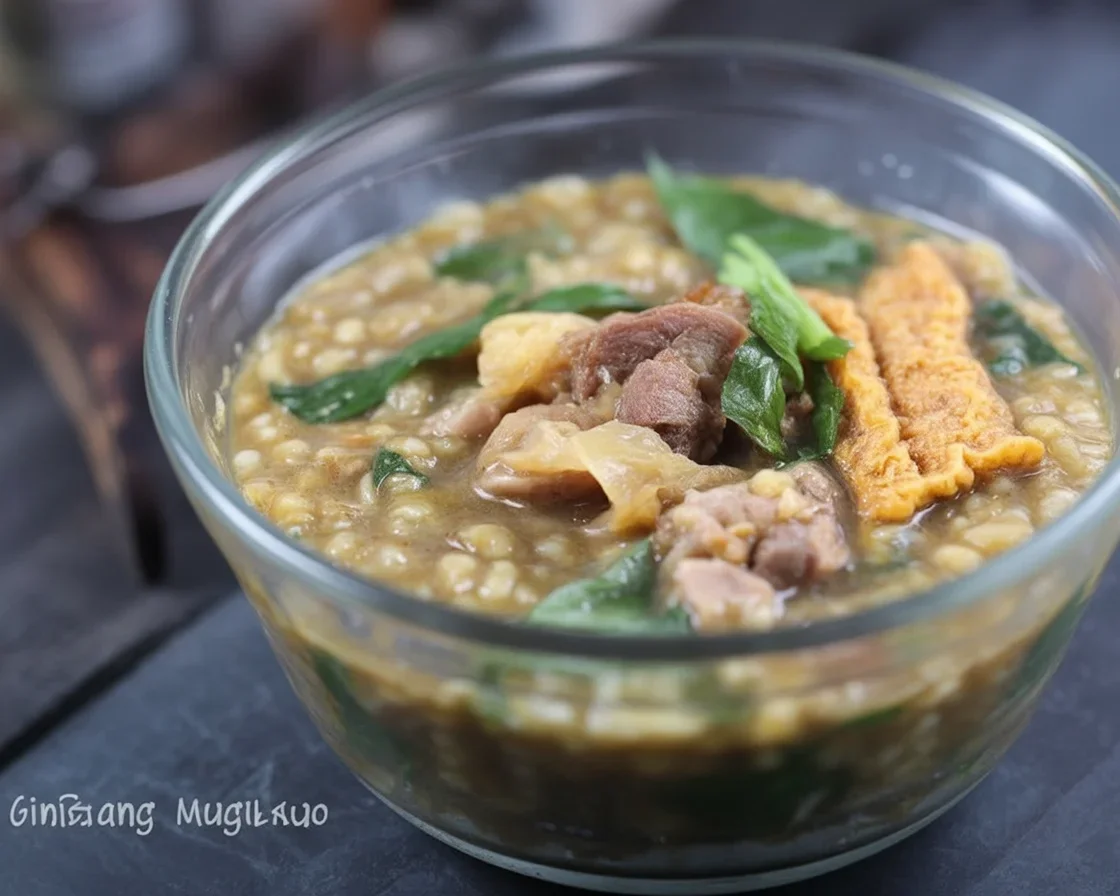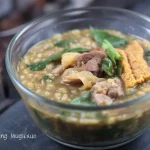- Introduction to Monggo Beans
- Health Benefits of Mung Beans
- Step-by-Step Cooking Instructions for Pork Monggo
- Common Variations of Monggo Dishes
- Tips for Enhancing Flavor and Texture
- Common Questions
Ever tried making ginisang munggo with malunggay but found your beans either too mushy or just… weirdly bland? I hear you. When I first made it, my kitchen turned into a steam room. No joke, I’d always think, “Wow, is it supposed to look this swampy?” If you’re hoping for a super detailed, no-nonsense guide (plus a bunch of insider tips), you’re honestly in the right spot. Trust me, this dish may look humble, but it sneaks its way right into your comfort food list. And it’s not just about hunger—sometimes, you just need munggo ‘cause your soul says so.
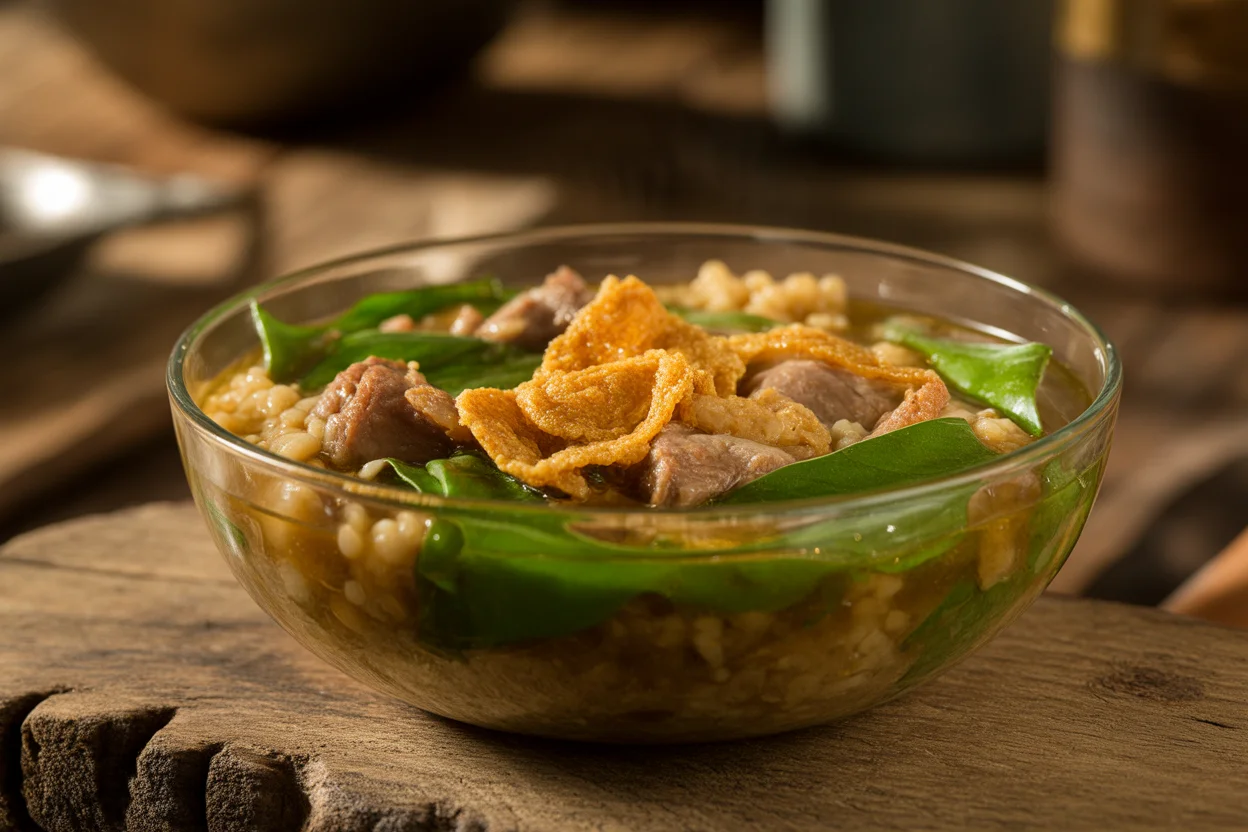
Introduction to Monggo Beans
Let’s get the basics clear. Monggo beans, or mung beans in English, are tiny green gems everywhere in Filipino markets. They show up in a lot of classic comfort foods—especially on Fridays if you believe in those food traditions. Dry mung beans are hard, but wow they plump up massive with just a bit of water and time. They cook faster than most beans which makes life easier, by the way.
They don’t have a strong flavor (kind of like tofu in that sense). Instead, they suck up whatever you add in, be it leafy greens or the oil from your sautéed garlic. I remember my lola would just dump them in a pot, and later, we’d get this earthy, almost nutty dish everyone would love. Plus, they last a while in the pantry. You forget about them until you’re low on groceries, then suddenly—surprise, surprise—they come to the rescue.
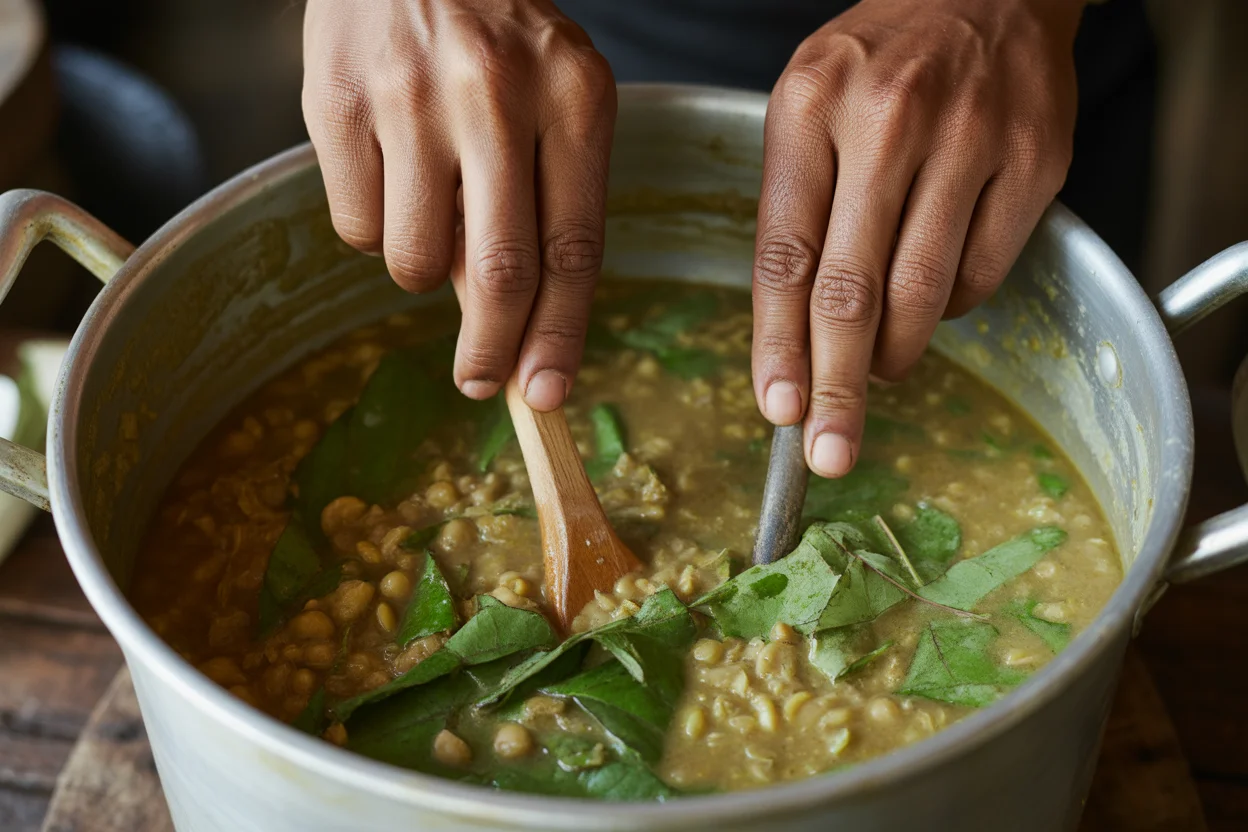
Health Benefits of Mung Beans
Before you skip ahead, let’s talk health perks. Ginisang munggo with malunggay leaves isn’t just easy on the wallet. It’s like a multi-vitamin in a bowl. Mung beans are packed with protein—super handy if you want more meatless meals, or just balance out that lechon you ate last weekend.
Malunggay (moringa) leaves? These are a big deal. Nutritionists are always hyping them up, and for good reason. We’re talking Vitamin C, iron, and more antioxidants than your overpriced health drink. If you ever had your mom or tita guilt-trip you for not eating your veggies, well—this is their secret weapon.
Some folks even say it helps “palakas ng katawan” (makes you strong). All I know is, it fills me up without making me feel sluggish, and my joints thank me for it.
Plus, kids? They’ll eat it too if you toss in enough crispy garlic on top. Honest!
Step-by-Step Cooking Instructions for Pork Monggo
Alright, here comes the juicy part: making authentic ginisang munggo with malunggay leaves, with pork. Don’t panic—it’s simple.
First, you’ll need:
- 1 cup mung beans
- Half a pound pork belly or pork shoulder, chopped small
- 1 medium onion, diced
- 4 cloves garlic, minced (don’t even think of skimping)
- 1 tomato, diced
- 4 cups water (plus more in reserve)
- 1-2 cups malunggay leaves
- 2 tablespoons fish sauce or salt to taste
- A bit of oil
Let’s cook: Start by rinsing those mung beans. No shortcuts, rinse ‘em until the water’s clear. In a big pot, boil those mung beans in water till soft—think 30-40 minutes, but check at 25 so you don’t get mashed beans.
While the beans are going, cook your pork separately in a splash of oil over medium heat. Once browned, toss in the onions, garlic, and tomatoes. Sauté this mix until the tomato melts, and the kitchen smells ridiculous (as in, neighbors-peeking-in-the-window good). Slide the cooked mung beans—water and all—into your meat and veg mix. Simmer for 10-15 minutes more, stirring here and there. Add extra water if you like your soup thinner.
Finally, just before serving, stir in heaps of malunggay leaves. Salt and fish sauce go in last—season, taste, adjust. Some say you should let it sit five more minutes for the malunggay to soften down. Serve piping hot with rice. Oh—slice chili if you like it spicy.
“Ever since switching from instant noodles to homemade ginisang munggo with malunggay leaves, I have way more energy and my kids ask for seconds! It’s become our Friday night tradition.” – Tina R., Cavite
Common Variations of Monggo Dishes
There’s seriously a hundred ways to cook ginisang munggo with malunggay leaves. I feel like every family does their own wildcard tweaks. Some folks go all-veggie—no pork, all flavor. I’ve met people who put upo (bottle gourd) or squash in the pot, and that adds sweetness. Funny, but shrimp or tinapa (smoked fish) instead of pork? That’s a whole new level—smoky, rich, and a bit briny.
When my cousin came to town, she tried adding coconut milk and I’ll admit, it was unexpectedly tasty—creamy and rich as a five-star restaurant. If you want it extra thick, mash half the beans. Or keep it brothy if that’s your jam. Don’t be afraid to toss in other greens too; spinach works in a pinch if malunggay’s nowhere in sight.
Some people even add chicharon bits at the end for that salty, crunchy top. The only real rule is—there are no rules. This dish is all about what you’ve got on hand and what mood you’re in.
Tips for Enhancing Flavor and Texture
Here are a few tips to make your ginisang munggo with malunggay leaves sing:
- Fry a ton of garlic until golden. Sprinkle it on top before serving for an amazing crunchy kick.
- Let the soup rest for ten minutes after cooking. Flavors soak in, trust me, it works better than magic.
- Adjust water based on your mood—thicker for hearty meals, thin for soup days.
- If you love spice, always add red chili at the end (raw or sautéed).
You really don’t need complicated steps. It’s just about fresh ingredients and a bit of patience. That’s it.
Common Questions
Q: Can I use a pressure cooker for the mung beans?
Oh, definitely. Cuts down cooking time to like ten minutes. Just don’t overcook or you’ll end up with green blob mush.
Q: Is spinach okay instead of malunggay?
Yep, totally. Spinach is milder, but it’s a good substitute if you can’t find malunggay leaves. Sometimes I blend the two if I feel wild.
Q: How long does ginisang munggo with malunggay leaves last in the fridge?
Honestly, up to three days if you store it in a tight container. But mine never lasts that long—people eat it up!
Q: Do I need to soak mung beans before boiling?
Not a must. It helps if you’re in a hurry, but honestly, I just rinse and toss them straight in the pot.
Q: Can I make it totally meat-free?
For sure! Add more tomatoes, onions, and vegetable stock. Sometimes, extra garlic and a splash of soy sauce does the trick.
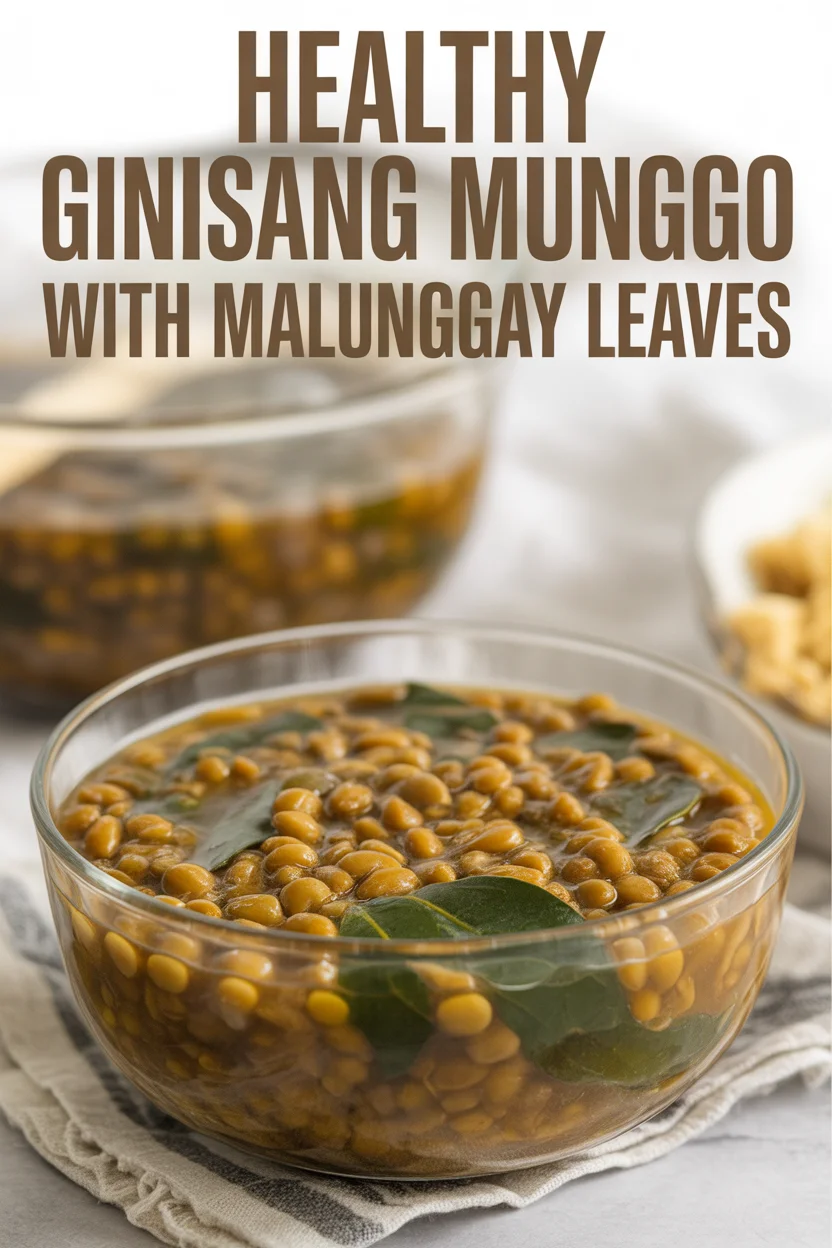
Ginisang Munggo with Malunggay
Ingredients
Main Ingredients
- 1 cup mung beans Rinsed until water is clear
- 0.5 pound pork belly or pork shoulder, chopped small Can substitute with shrimp or smoked fish
- 1 medium onion, diced
- 4 cloves garlic, minced Fry until golden for topping
- 1 medium tomato, diced Make sure it melts while cooking
- 4 cups water Plus more in reserve for desired consistency
- 1-2 cups malunggay leaves Can substitute with spinach
- 2 tablespoons fish sauce or salt to taste
- to taste none oil For sautéing
Instructions
Preparation
- Rinse the mung beans until the water is clear.
Cooking
- In a large pot, boil the mung beans in water until soft, approximately 30-40 minutes.
- While the beans are cooking, heat a splash of oil in a separate pan over medium heat.
- Add the pork and cook until browned.
- Incorporate the onions, garlic, and tomatoes into the pork and sauté until the tomato is melted.
- Add the cooked mung beans (with water) into the pork and vegetable mixture.
- Simmer for an additional 10-15 minutes, adjusting water for desired consistency.
- Stir in malunggay leaves just before serving and season with salt and fish sauce.
- Let the soup rest for 5 minutes before serving.
